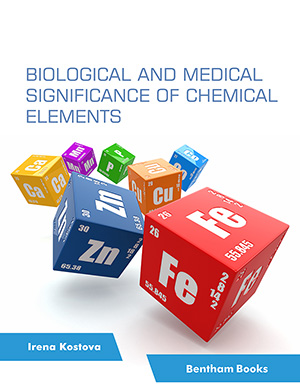Abstract
Background and Purpose: Emodin, a compound derived from rhubarb and various traditional Chinese medicines, exhibits a range of pharmacological actions, including antiinflammatory, antiviral, and anticancer properties. Nevertheless, its pharmacological impact on bladder cancer (BLCA) and the underlying mechanism are still unclear. This research aimed to analyze the pharmacological mechanisms of Emodin against BLCA using network pharmacology analysis and experimental verification.
Methods: Initially, network pharmacology was employed to identify core targets and associated pathways affected by Emodin in bladder cancer. Subsequently, the expression of key targets in normal bladder tissues and BLCA tissues was assessed by searching the GEPIA and HPA databases. The binding energy between Emodin and key targets was predicted using molecular docking. Furthermore, in vitro experiments were carried out to confirm the predictions made with network pharmacology.
Results: Our analysis identified 148 common genes targeted by Emodin and BLCA, with the top ten target genes including TP53, HSP90AA1, EGFR, MYC, CASP3, CDK1, PTPN11, EGF, ESR1, and TNF. Gene Ontology (GO) and Kyoto Encyclopedia of Genes and Genomes (KEGG) pathway enrichment analyses indicated a significant correlation between Emodin and the PI3KAKT pathway in the context of BLCA. Molecular docking investigations revealed a strong affinity between Emodin and critical target proteins. In vitro experiments demonstrated that Emodin inhibits T24 proliferation, migration, and invasion while inducing cell apoptosis. The findings also indicated that Emodin reduces both PI3K and AKT protein and mRNA expression, suggesting that Emodin may mitigate BLCA by modulating the PI3K-AKT signaling pathway.
Conclusion: This study integrates network pharmacology with in vitro experimentation to elucidate the potential mechanisms underlying the action of Emodin against BLCA. The results of this research enhance our understanding of the pharmacological mechanisms by which Emodin may be employed in treating BLCA.
Keywords: Bladder cancer, emodin, network pharmacology, molecular docking, molecular mechanism, experimental verification.
[http://dx.doi.org/10.1016/S2214-109X(23)00406-0] [PMID: 37774721]
[http://dx.doi.org/10.3389/fendo.2021.841668] [PMID: 35154014]
[http://dx.doi.org/10.1002/ptr.6532] [PMID: 31680350]
[http://dx.doi.org/10.2147/DDDT.S196319] [PMID: 31114158]
[http://dx.doi.org/10.1016/j.ejphar.2019.172525] [PMID: 31288005]
[http://dx.doi.org/10.3892/mmr.2018.9510] [PMID: 30272291]
[http://dx.doi.org/10.1002/ddr.21214] [PMID: 25160070]
[http://dx.doi.org/10.3390/cancers10110461] [PMID: 30469422]
[http://dx.doi.org/10.1093/nar/gkac956] [PMID: 36305812]
[http://dx.doi.org/10.1093/nar/gkac297] [PMID: 35524552]
[http://dx.doi.org/10.1093/nar/gkz382] [PMID: 31106366]
[http://dx.doi.org/10.1186/1758-2946-6-13] [PMID: 24735618]
[http://dx.doi.org/10.1093/nar/gkaa1100] [PMID: 33237286]
[http://dx.doi.org/10.1093/nar/gky1151] [PMID: 30445645]
[http://dx.doi.org/10.1186/s12864-016-2722-2]
[PMID: 31680165]
[http://dx.doi.org/10.1093/nar/gkac194] [PMID: 35325185]
[http://dx.doi.org/10.2174/157340911795677602] [PMID: 21534921]
[http://dx.doi.org/10.1021/acsomega.2c06451] [PMID: 36816691]
[http://dx.doi.org/10.1021/acsomega.1c00137] [PMID: 33817501]
[http://dx.doi.org/10.3390/ph16050765] [PMID: 37242548]
[http://dx.doi.org/10.3390/ph16010095] [PMID: 36678592]
[http://dx.doi.org/10.1016/j.biotechadv.2018.03.003] [PMID: 29548878]
[http://dx.doi.org/10.3390/ph16040611] [PMID: 37111369]
[http://dx.doi.org/10.1093/bioinformatics/btp465] [PMID: 19648136]
[http://dx.doi.org/10.2174/1386207325666210917113207] [PMID: 34533442]
[http://dx.doi.org/10.3389/fphar.2020.00733] [PMID: 32508653]
[http://dx.doi.org/10.3389/fchem.2020.639449] [PMID: 33659236]
[http://dx.doi.org/10.1038/srep42717] [PMID: 28256516]
[http://dx.doi.org/10.1080/07391102.2021.1969281] [PMID: 34463219]
[http://dx.doi.org/10.3390/computation10010007]
[http://dx.doi.org/10.7717/peerj.8261] [PMID: 31871844]
[http://dx.doi.org/10.1038/s41598-017-00143-6] [PMID: 28298630]
[http://dx.doi.org/10.1093/carcin/bgp077] [PMID: 19372140]
[http://dx.doi.org/10.7150/thno.79493] [PMID: 37215577]
[http://dx.doi.org/10.15252/embj.201798589] [PMID: 30237309]
[http://dx.doi.org/10.1186/s40360-019-0360-4] [PMID: 31852525]
[http://dx.doi.org/10.1002/ijc.30850] [PMID: 28653316]
[http://dx.doi.org/10.1126/science.1115035] [PMID: 16469926]
[PMID: 31746435]
[http://dx.doi.org/10.1038/s12276-022-00786-0] [PMID: 35729325]
[http://dx.doi.org/10.2174/1381612824666181106100837] [PMID: 30398108]
[http://dx.doi.org/10.1016/j.bbrc.2007.02.099] [PMID: 17346677]
[http://dx.doi.org/10.1016/j.scitotenv.2022.156965] [PMID: 35764155]
[http://dx.doi.org/10.1016/j.cyto.2020.155348] [PMID: 33153895]
[http://dx.doi.org/10.1007/s13402-019-00489-1] [PMID: 31900901]
[http://dx.doi.org/10.1080/21655979.2022.2036909] [PMID: 35246010]
[http://dx.doi.org/10.1016/j.biocel.2021.106069] [PMID: 34428588]
[http://dx.doi.org/10.1186/s13046-022-02377-3] [PMID: 35581606]
[http://dx.doi.org/10.1038/s41586-023-06348-2] [PMID: 37495688]
[PMID: 31786865]





























